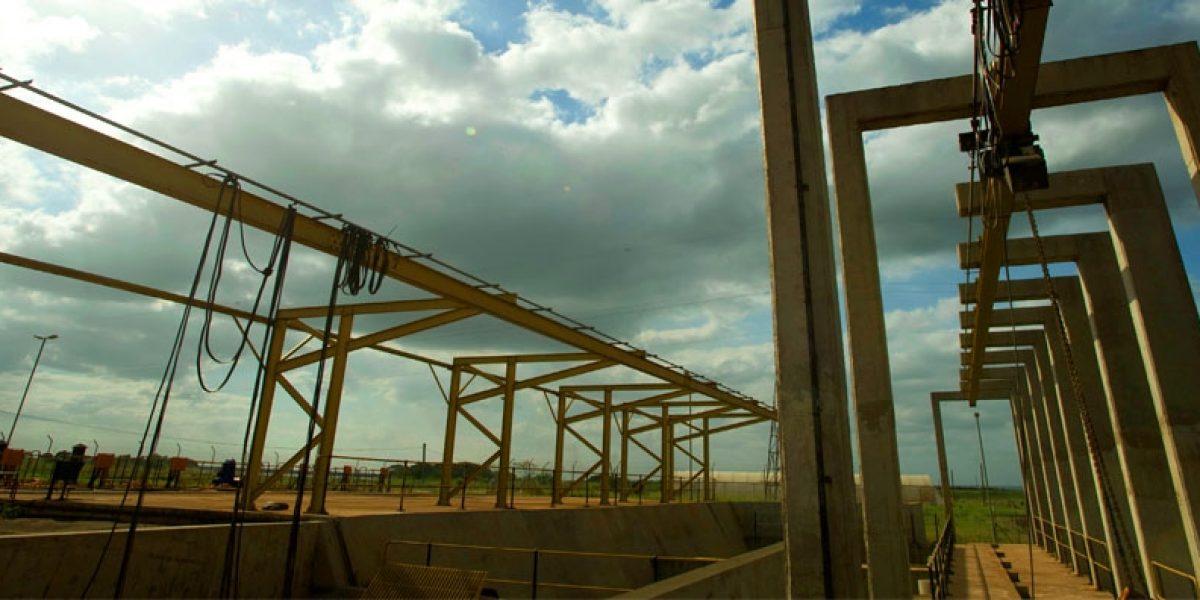Some estimates indicate that sub-Saharan Africa alone requires up to USD$ 93 billion annually until 2020 to finance its infrastructure deficit. Multilateral development banks (MDBs) such as the World Bank and the African Development Bank go a long way towards addressing these challenges.
MDBs do this by offering their borrowers favourable financing options by leveraging capital contributions from their members on international bond markets, which, in turn, translate into loans with low interest rates and long maturities. In addition to such attractive financial offerings, MDBs also harbour decades of infrastructure development knowledge and technical experience, giving them a competitive advantage over other financiers.
However, MDBs increasingly face tough competition from other financing sources such as private financiers and bilateral investors (think Chinese investment in Africa). In response, they recognise the need to tailor their financial offerings to suit their clients better.
‘Africa’ is often presented as a single country with common development challenges, ignoring the reality that the continent is made up of 54 sovereign nations with differing histories, economic structures and levels of development. While some similarities certainly exist, MDBs increasingly have to grapple with disparities when engaging with low- and middle-income countries (LICs and MICs) in Africa.
The World Bank distinguishes between countries, classifying them as ‘LICs’ or ‘MICs’ based on their gross national income (GNI) divided by the size of their population. Countries with a GNI per capita below USD$ 1005 are considered LICs, while countries with a GNI per capita between USD$ 1005 and USD$ 12736 are considered MICs. Examples of LICs include Lesotho, Senegal and Tanzania, while countries such as Nigeria, Botswana and South Africa are considered MICs. MDBs, as well as a range of stakeholders engaging with these countries on infrastructure financing, are increasingly recognising the significant disparities among them.
For many LICs, the limited financial capacity of the state has not only meant that they cannot afford to finance infrastructure themselves, but equally that they have limited capacity to borrow from MDBs. This means that LICs traditionally qualify for concessional loans instead, which have very low interest repayment rates. In contrast, MICs have experienced increasing economic growth and therefore qualify for bigger loans from MDBs.
At the same time, many MICs tend to have higher levels of macroeconomic and political stability and more sophisticated legal and institutional structures, which make them less risky investment destinations. Consequently, private financiers are keener to invest in these countries. Equally, as MICs move up the development curve, they have developed sophisticated domestic financial markets, allowing their governments to raise capital from their local markets. Over the past decade, Botswana has managed to increase domestic resource mobilisation from USD$ 40 million in 2005 to USD $600 million in 2015. While these figures remain marginal relative to the typical capital required for large-scale infrastructure developments, it signals the increasing financing alternatives open to MICs.
This is not to suggest that LICs do not have alternative financing options as well. In the past, LICs have been heavily reliant on official development assistance (ODA) from developed countries to finance infrastructure. ODA, however, has experienced an overall decline in the post-Global Financial Crises; it reached nearly USD$ 90 billion in 2009 compared to the USD$ 35 billion per year for the period 2012–2014.
Due to the limits placed on borrowing from MDBs and declining ODA, some LICs have reached out to private investors to address their infrastructure financing deficit. While private financiers facilitate loans significantly quicker and with less stringent conditions, this too comes at a cost. Whereas concessional loans from MDBs can attract less than 1% interest, a grace period of 10 years, and a maturity of 20 – 50 years,{tweetme}an equivalent loan from private financiers can carry interest rates as high as 7% with maturities of below 10 years.{/tweetme} Such expensive loans further compound a debilitating characteristic of LICs: indebtedness. Senegal’s inability to access sufficient levels of concessional financing resulted in the government issuing Eurobonds in 2009 to mobilise additional finance at interest rates of 8.75% and 6% – a very costly option for the government.
The level of economic development also often dictates the different types of investments that LICs and MICs seek. Financing from MDBs and ODA is an important way for LICs to ensure the supply of public goods to its citizens. Therefore financing from these sources generally tends to focus on social sectors such as education and health. In contrast, MICs typically seek out significant capital to fund large scale infrastructure to facilitate inclusive growth, hoping to create more employment which will reduce inequalities. Between 1967 and 2015, AfDB loan and grant approvals to the social sector in Lesotho were more than 20% whereas in contrast in South Africa, approvals in the social sector were negligible compared to infrastructure which exceeded 70% of total approvals.
Once MDBs have extended loans to countries, they typically employ their own standard financial management processes for the disbursement of the loans. While this certainly makes the process easier for MDBs, it adds a significant bureaucratic burden for borrowing countries, who not only already have their own public financial management systems in place, but also borrow from multiple MDBs. This requires borrowers to comply with each MDB’s respective procedures and protocols, instead of using in-country systems. While MICs have increasingly insisted on employing their own reporting mechanisms for such processes, the capacity of many LICs to do so remains low and they typically favour using the prescribed mechanisms. In this case, MDBs need to be cognisant of such disparities and should respond to the individual needs of countries if they want to remain relevant.
While there are multiple examples of differences between LICs and MICs, there are also common challenges with regard to infrastructure financing. Most countries in Africa lack the capacity to adequately engage in all processes related to infrastructure development, including planning, financing and preparation. Often the skills to undertake environmental or financial assessments, or the legal capacity to negotiate financing deals are lacking. This lack of skills becomes apparent for countries wanting to engage in public-private partnerships (PPPs), where public and private financiers operate together when financing infrastructure.
The government of Lesotho, for example shouldered disproportionately high costs in its joint venture with a private firm managing the Queen Mamohato Memorial Hospital. Equally, Botswana has been struggling to facilitate PPPs despite the establishment of a dedicated PPP Unit in 2009 because of the lack of domestically available skills in both the public and private sectors.
Equally important are the types of projects that require funding across both LICs and MICs. Investment trends indicate that private financiers have in the past favoured financing infrastructure in the information and telecommunications sector, and more recently energy infrastructure. Typically this is the case because it is easier to secure revenue streams from such investments and the associated costs are clearer, while management of the assets generally also sits with the investor, rather than governments. These factors contribute to lower risk associated with investments in these sectors and have assured greater appetite from private financiers. In contrast, sectors such as water and sanitation across all countries have attracted little investment outside of MDBs and ODA, due to lower, less secure and longer returns on investment. In this regard, public institutions such as MDBs remain critical to assisting African countries in developing these sectors.
Structural economic challenges have also been a key concern for most countries in Africa. While some countries such as South Africa have managed to diversify their economies somewhat, others such as Nigeria, Angola, Zambia, and Sudan, remain overly reliant on single commodities to generate the bulk of their income. During commodity price booms, these countries naturally benefit. However, the current global commodity crises has highlighted how vulnerable such economies are to commodity price shocks. While investment in infrastructure could be used to counteract the economic slowdown, a drastic reduction in state revenues hinders such efforts.
However, there is further room for improvement in how MDBs assist African countries to fill the infrastructure financing gap. LICs and MICs both complain about the extensive loan approval process which they deem to be overly bureaucratic, lengthy and costly. The AfDB’s loan approval process, for example, involves more than 20 approval processes, including multiple country visits. While the merit in front-loading related processes lies in mitigating potential issues down the line when implementation has started (e.g. environmental degradation or social backlash), the process can take MDBs years to approve, while private financiers can process loans in weeks or months.
At the same time, African countries across the development curve are drawn to MDBs given their development and technical expertise. In the case of the AfDB, it has been providing such services for more than six decades, and has not only honed its development approach through trial and error, ensuring the most effective development impacts for its projects, but has equally attracted some of the best experts to provide technical assistance and policy advice to governments. While this is certainly an attractive offering to African countries, if MDBs do not make concerted efforts towards adapting their approaches to individual African countries, these countries will increasingly gravitate towards alternative financiers that are not as concerned about development impacts.
When it comes to infrastructure financing in African countries, numerous common challenges exist across the development spectrum. But equally, differing levels of economic development ensures that each country faces certain unique challenges. While the simplistic differentiation between ‘LICs’ and ‘MICs’ highlights such differences, further disparities exists even within these groupings. In order for MDBs to remain relevant in the coming years, more attention should be paid towards tailoring their technical and financial assistance on a country-by-country basis.









